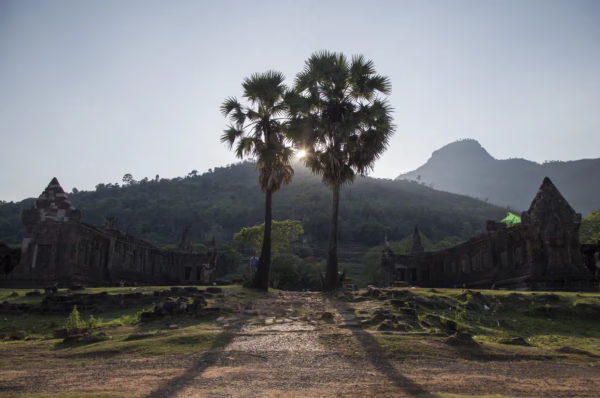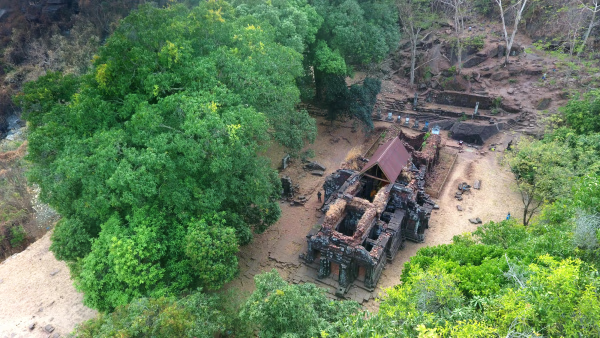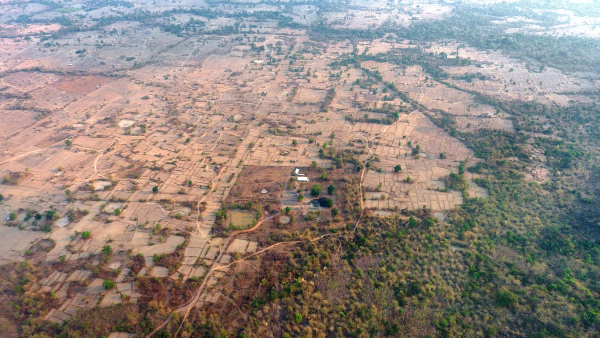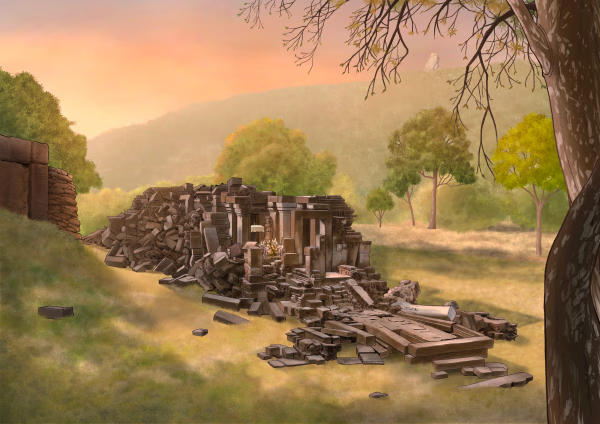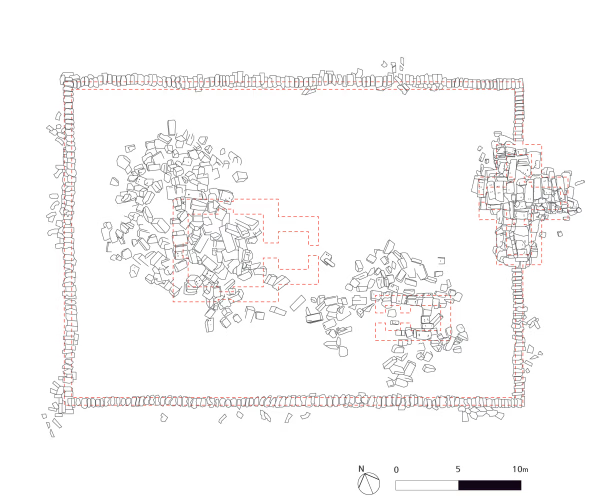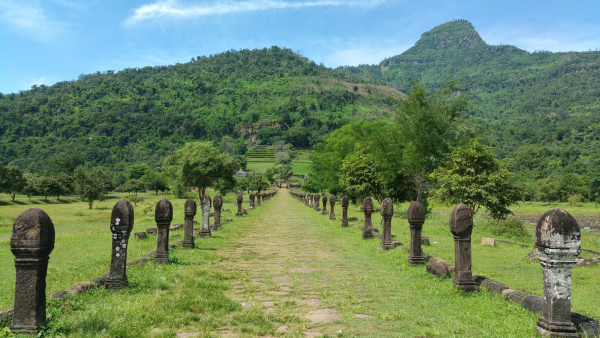
Sacred Mountain - Vat Phou Temple Complex
Pilgrimage Experience: From the World of Humans to the World of Gods
Published 2024.08.15 by 유다연
ອະທິບາຍ
As you reach the end of the path between the barays, you will see the ceremonial bathing embankment of the central baray located to the south. From the center of the embankment to the first terrace of the temple complex, there is a pathway that passes between two smaller barays. This 250-meter-long path is decorated with stone pillars and nagas.
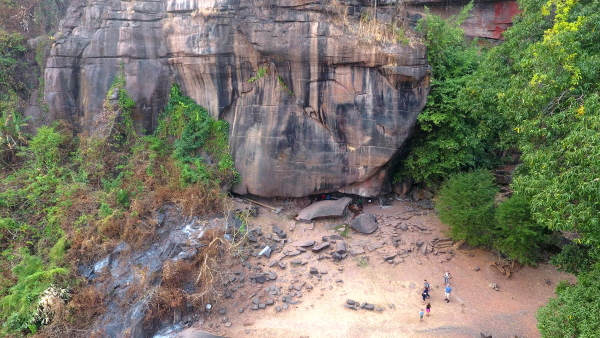
The highlight of the Vat Phou-Champasak site is undoubtedly the Vat Phou temple complex. The main shrine, originally dedicated to Shiva, was built on a natural terrace at the base of the mountain, just below a sacred spring that gushes from the rock. Today, the shrine houses a statue of Buddha. The relatively wide plain on the mountainside, overlooking the Champasak plain and the Mekong River, along with the sacred spring, explains why this location was chosen for such a major project. Pilgrims can gradually feel themselves approaching the sacred Lingaparvata mountain from the plains. This type of temple design is rare in the Khmer region. The sacred water originating from the linga on Lingaparvata, which is considered the navel of the universe, flows down through the rocks into the main shrine, as if the mountain itself is sweating.

The Vat Phou temple complex tour begins right after purchasing the entrance ticket, with the spectacular view of the towering Lingaparvata mountain capturing your attention from the ticket office. As you walk further, you will come across two large barays (reservoirs) that were constructed during the Khmer Empire. While you can use an electric car to move from the entrance to the front of the Vat Phou temple, it is recommended to walk leisurely between the two barays. You can enjoy the peaceful sight of flocks of birds over the reflection of Lingaparvata mountain in the baray water.
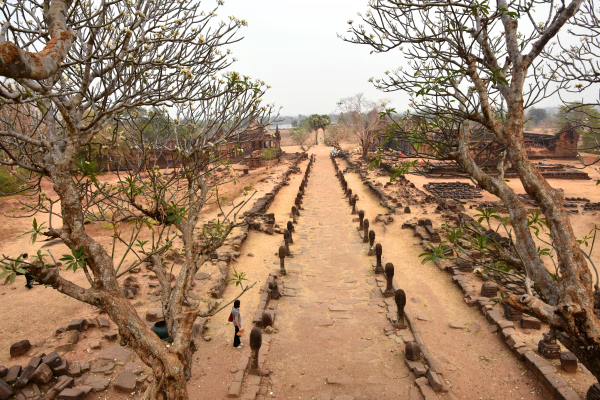
The first terrace begins where the path ends. The plaza features large stone buildings with wide courtyards. The spacious courtyards inside the buildings likely contained gardens filled with flowers and trees used for rituals and temple decorations. Under the shade of trees in these fragrant gardens, monks and devotees would have engaged in discussions or meditation. The two buildings face each other across the plaza, with entrances adorned with elaborate carvings. This plaza has been a popular photo spot for many visitors. On a sunny day, you might witness a photoshoot for newlyweds or professional models.

These rectangular courtyard buildings, surrounded on all four sides, were built during the Khmer era and likely served as venues for gatherings or ritual ceremonies of the monks. For a long time, locals believed these twin buildings to be palaces used by the royal men and women, especially associating them with King Kammatha and his daughter, Princess Nang Sida, who also appear in the legend of the Hong Nang Sida Temple.

Another path, decorated with stone pillars and naga statues on both sides, leads up to the second terrace. At the starting point of the path, to the south, is the Nandi Hall, dedicated to Shiva's sacred animal, the holy bull Nandi. This small shrine was built at the end of the ancient road that began in Angkor. The statue of Nandi and the Nandi Hall indicate that this is a temple dedicated to Shiva, even without seeing the deity statue inside the main shrine. For pilgrims who traveled a long distance, the Nandi Hall served as a kind of signpost, signaling that they had arrived at the sacred temple of Shiva.
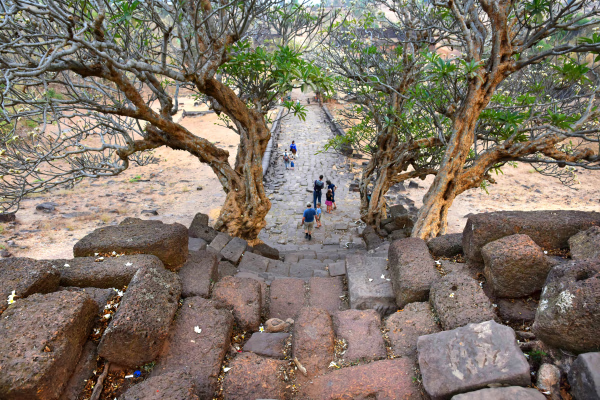
The second terrace is built with retaining walls approximately 2 meters high, serving as a kind of connector between the first and third terraces. In front of the staircase leading to the third terrace stands a large statue of Dvarapala, a guardian deity armed with weapons. Just as students would compose themselves upon seeing the head teacher at the school gate, this statue signifies the need to compose both body and mind before entering the sacred space.
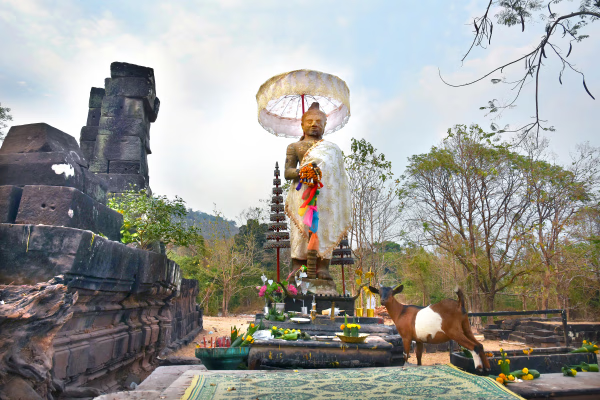
Gods Protecting the Temple
In the polytheistic Hindu religion, there are countless gods. Among them, Devas refer to the major gods, while Devatas refer to minor gods. There are numerous Devatas, including Vana-devata (forest gods), Grama-devata (village gods), and Lokapala-devata (guardian gods of directions).
In Khmer temples, many bas-reliefs depict male and female deities protecting the temple. The male figures are called Dvarapalas, while the female figures are called Devatas. Dvarapalas are typically depicted as strong warriors holding a mace, while Devatas are portrayed as young, graceful, yet dignified queens, similar to Apsaras, the nymphs of clouds and water. Dvarapalas and Devatas reflect the idealized male and female figures of the Khmer people at the time.
You can access the third terrace via the stairs between the retaining walls. At the top of the stairs, a naga is designed in a rhythmic pattern, with ancient Champa trees, whose twisted trunks resemble braided cords, standing picturesquely on either side of the steps. The porous laterite stone, with its many holes like those seen in osteoporosis, combines with the crooked stair treads to create a unique photo spot. The third terrace also continues with a long inclined pathway.
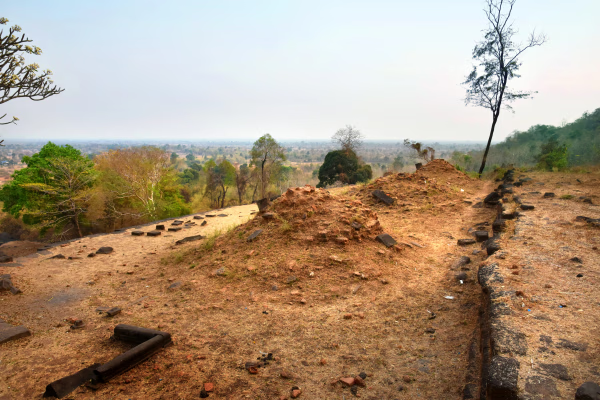
The fourth terrace is approximately 20 meters wide. On each side, there are three small brick towers, making a total of six. At first glance, they might look like stupas, but they were built during the Khmer era to enshrine the linga of Shiva.
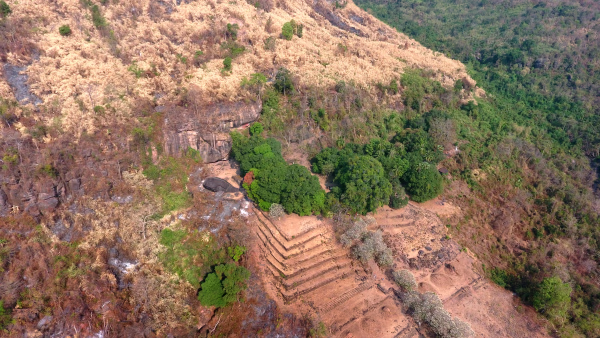
The most prominent feature of the fifth terrace is the seven-tiered retaining wall, which stands 15 meters high. The "Seven Sages" associated with ancient Ursa Major worship refer to the seven great sages who composed the Vedas, Hinduism's most sacred texts. The seven-tiered retaining wall symbolizes the world of saints, a realm that must be passed through before reaching the divine world.
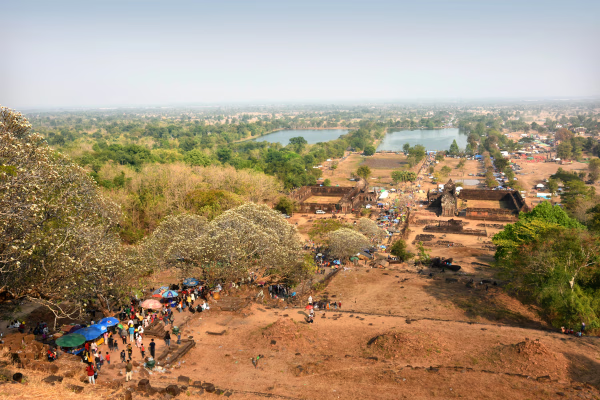
The sixth terrace is a wide plain, with the main shrine dedicated to Shiva located in the central area. It is situated at an elevation of approximately 75 meters above the plain, offering an impressive view. On clear days, one can observe as far as beyond the Mekong River with the naked eye. It serves as a viewpoint for the Vat Phou-Champasak site.
ບົດທີ
ການນິດສະການທີ່ກ່ຽວຂ້ອງ
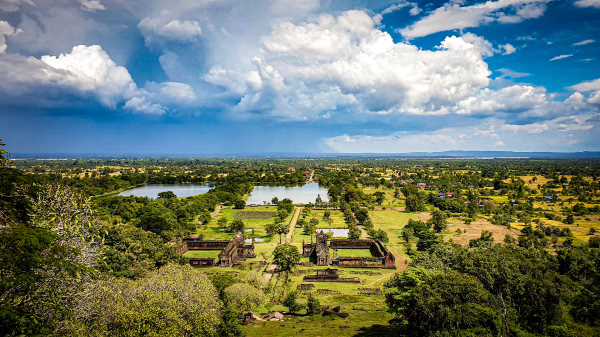
Natural History
Online Exhibition of the Vat Phou Champasak Ruins and the Excavation of Hong Nang Sida
The Vat Phou - Champasak site lies on fertile alluvial plains on the banks of the Mekong River, and its mountainous core is the eastern outlier of the Dângrêk Range, which is home to the Phou Kao Mountains that rise up to an altitude of 1,416 meters.
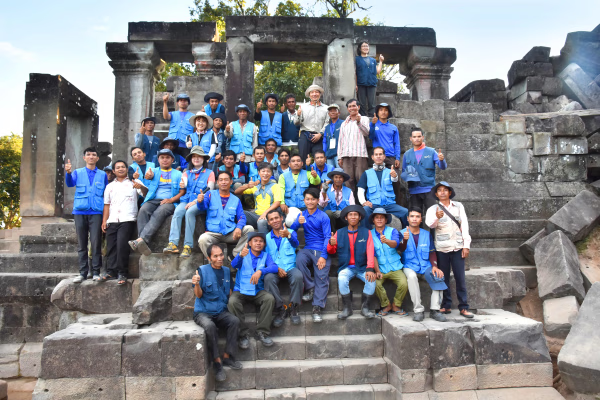
Natural History
Lao-Korea Cooperation Project : Hong Nang Sida Temple
Since 2013, the Cultural Heritage Administration and the Korea Cultural Heritage Foundation have been working on a heritage restoration project at the World Heritage Site “Vat Phou and Associated Ancient Settlements within the Champasak Cultural Landscape” in Lao PDR. The project focuses on restoring the collapsed stone structure called Hong Nang Sida, located in the southern part of the Vat Phou Temple Complex. This site, also known as the “Temple of Princess Sida,” is gradually regaining its original appearance thanks to the ongoing restoration efforts by a Korean research team.
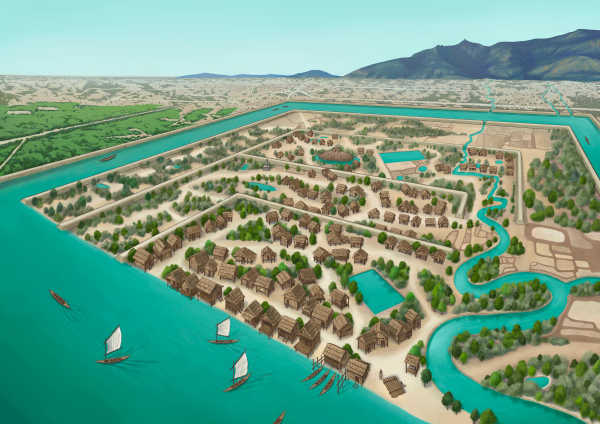
Natural History
Sacred River
The archaeological site of the ancient city is situated on the plains adjacent to the Mekong River. The city was surrounded by two layers of brick and earthen ramparts, with a moat in between. These ramparts measured approximately 2.4 km from north to south and 1.8 km from east to west, with the best-preserved sections standing up to 6 meters high and 14 meters thick. The walls and moats were likely constructed to manage and utilize the waters from the Phou Kao Mountains' tributaries.
